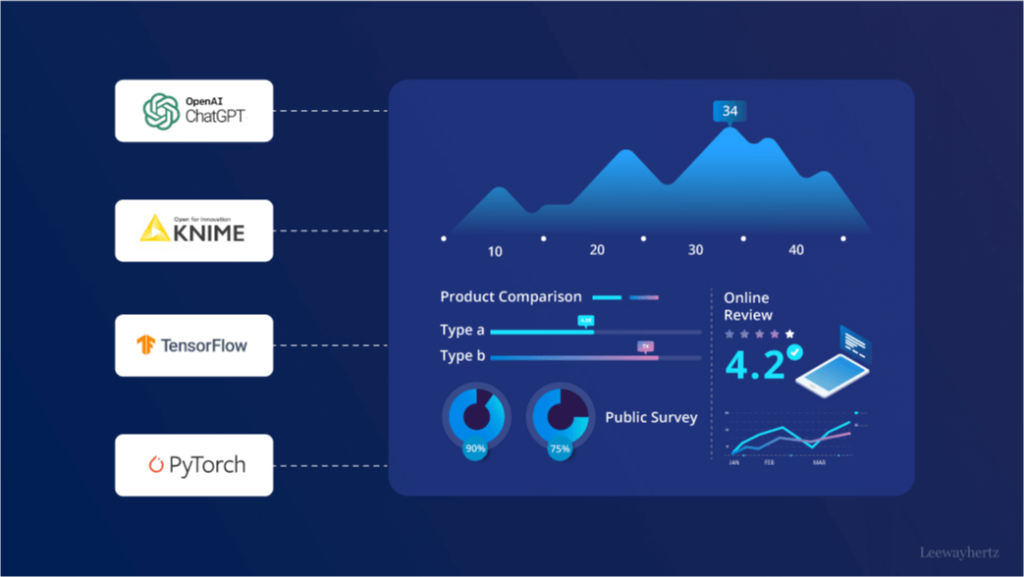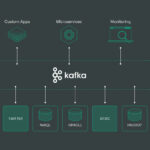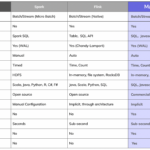As the world becomes increasingly data-driven, the future of AI-driven Big Data analytics holds immense potential for transforming businesses and industries. Big Data, characterized by the massive volume, variety, and velocity of data being generated, presents both challenges and opportunities for organizations looking to extract valuable insights. With advancements in artificial intelligence, machine learning, and deep learning algorithms, businesses can now leverage powerful tools to process, analyze, and interpret vast amounts of data at unprecedented speeds. In this dynamic landscape, the integration of AI-driven techniques into Big Data analytics opens up new horizons for innovation, efficiency, and decision-making across various sectors. This convergence of AI and Big Data is reshaping the way organizations operate, enabling them to unlock hidden patterns, trends, and correlations that can drive strategic growth and competitive advantage.
As we dive deeper into the digital age, the confluence of Artificial Intelligence (AI) and Big Data analytics is reshaping how organizations leverage data. The future of AI-driven Big Data analytics is promising, with advanced technologies transforming data processing, predictive analysis, and decision-making.
Understanding Big Data and AI
Big Data refers to massive volumes of structured and unstructured data that inundate businesses daily. The challenge is not just about managing this data, but also about extracting valuable insights from it. On the other hand, AI encompasses machine learning, natural language processing, and other advanced analytics tools that empower machines to learn from data and make decisions autonomously.
The Synergy Between AI and Big Data
The integration of AI into Big Data analytics allows for:
- Improved prediction accuracy: AI algorithms can analyze historical data with high precision, making predictions that are pivotal for businesses.
- Real-time analytics: With AI, businesses can process vast amounts of data in real-time, enabling immediate decision-making.
- Enhanced data visualization: AI can transform complex data sets into intuitive visual representations, making insights easier to understand.
Key Trends Shaping AI-Driven Big Data Analytics
1. Automated Data Processing
Automation is one of the most significant trends in AI-driven Big Data analytics. Companies are increasingly utilizing AI to automate data collection, cleaning, and analysis processes. This reduces the time and costs associated with manual data handling and allows analysts to focus on interpreting data rather than gathering it.
2. Advanced Predictive Analytics
The ability to forecast future outcomes based on historical data is becoming increasingly sophisticated. AI algorithms are improving predictive analytics capabilities, enabling businesses to predict customer behavior, streamline operations, and optimize marketing strategies. As a result, organizations can make informed decisions that lead to competitive advantage.
3. Natural Language Processing (NLP)
Natural Language Processing is a branch of AI that enables machines to understand human language. In the context of Big Data analytics, NLP can process and analyze large volumes of unstructured data, such as customer feedback, social media interactions, and online reviews. This capability allows businesses to gain insights into customer sentiment and preferences, driving more personalized strategies.
4. Enhanced Customer Experience
AI-driven analytics can significantly enhance the customer experience. By leveraging data collected from various touchpoints, businesses can tailor their offerings, improve service delivery, and personalize interactions. Companies like Amazon and Netflix utilize AI algorithms to analyze user behavior and preferences, recommending products or content that resonate with individual users.
5. Edge Computing Integration
Bringing data processing closer to the source is a trend that complements AI-driven Big Data analytics. Edge computing allows data to be processed on-site rather than sent to centralized data centers. This not only speeds up data processing but also enhances real-time decision-making, crucial for industries like manufacturing, autonomous vehicles, and healthcare. The integration of AI with edge computing can lead to faster, more efficient analytics capabilities.
Challenges in AI-Driven Big Data Analytics
While the future looks promising, several challenges remain in implementing AI-driven Big Data analytics:
- Data Quality: The effectiveness of AI models is heavily influenced by the quality of data. Poor quality data can lead to inaccurate insights, highlighting the need for robust data governance practices.
- Privacy Concerns: As organizations collect and analyze personal data, concerns around privacy and data protection continue to grow. Complying with regulations such as GDPR is essential for organizations leveraging Big Data analytics.
- Skill Gap: There is a growing need for professionals skilled in Big Data and AI. As organizations adopt these technologies, the demand for qualified data scientists and analysts continues to increase.
The Role of Cloud Computing in AI-Driven Big Data Analytics
Cloud computing offers scalable infrastructure that is essential for managing Big Data analytics. By storing data in the cloud, businesses gain flexibility and accessibility, enabling teams to collaborate and analyze data from anywhere. Furthermore, many cloud providers are integrating AI capabilities, allowing organizations to utilize advanced analytical tools without heavy upfront investment in infrastructure.
With cloud-based solutions, businesses can easily scale their analytics capabilities as their data requirements grow. They can quickly deploy AI models with access to large volumes of historical data that cloud platforms provide, facilitating more sophisticated analytics.
Real-World Cases of AI and Big Data Analytics
1. Healthcare
The healthcare industry is a prime example of how AI-driven Big Data analytics can improve outcomes. Hospitals can analyze patient data to identify trends and patterns, resulting in predictive modeling that enhances patient care. For example, AI algorithms can predict the likelihood of readmission based on historical patient data, improving treatment strategies and resource allocation.
2. Retail
In retail, AI-driven Big Data analytics allows for enhanced inventory management and personalized customer experience. Retail giants like Walmart use predictive analytics to optimize stock levels based on customer buying patterns, reducing costs and increasing efficiency.
3. Financial Services
The financial sector employs AI-driven analytics for fraud detection and risk management. By scrutinizing transaction data in real-time, AI systems can identify unusual patterns indicative of fraudulent activity, enabling organizations to act swiftly and mitigate potential losses.
The Future Landscape of AI-Driven Big Data Analytics
As technology continues to evolve, the future of AI-driven Big Data analytics is expected to unveil several transformative developments:
- Increased Personalization: AI capabilities will foster deeper personalization in products and services, as businesses leverage collected data to finely tune offerings to individual preferences.
- Augmented Analytics: Augmented analytics, which employs machine learning to automate data preparation, insight generation, and sharing, is likely to take center stage. This could democratize access to analytics, making it available even to non-technical users.
- Self-Service Analytics: The rise of self-service analytics tools will empower business users without technical expertise to generate insights quickly and efficiently.
- Focus on Ethics: As AI systems are deeply integrated into business processes, the ethical implications of these technologies will come under scrutiny. Companies will need to prioritize ethical AI practices to build customer trust and comply with regulations.
The evolving landscape of AI-driven Big Data analytics presents astonishing opportunities for businesses across various sectors. By embracing these advancements, companies can not only improve their decision-making processes but also drive innovation, improve operational efficiency, and gain a competitive edge in the market.
The future of AI-driven Big Data analytics holds tremendous potential to transform industries, optimize decision-making processes, and drive innovation. As organizations continue to harness the power of AI algorithms and advanced technologies, the possibilities for extracting valuable insights from massive datasets are virtually limitless. Embracing this evolution is essential for staying competitive in the rapidly evolving landscape of Big Data analytics. It is clear that the intersection of AI and Big Data will continue to redefine the way we analyze and utilize data, shaping a more efficient and intelligent future for businesses and society as a whole.














